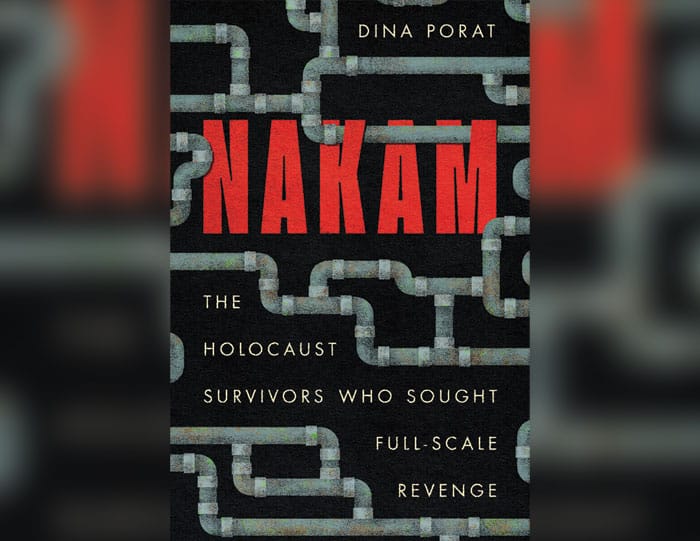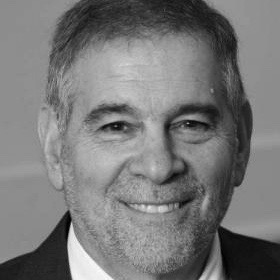
“Nakam: The Holocaust Survivors Who Sought Full Scale Revenge” (Stanford: Stanford UP, 2023)
Last week, Jews observed Tisha b’Av, the traditional day of mourning for the destruction of the first and second Temples, the expulsion from Spain and most recently, for the first deportation of Jews from Warsaw to Treblinka. Given centuries of experience with tragedy, we know what to do on the 9th of Av: mourn, lament, cry and confront the magnitude of loss while imagining what could have been had we not been defeated again and again.
But what about the 10th of Av, the day after destruction?
Israeli historian Dina Porat has written a fascinating book about a small band of Holocaust survivors who were intent on full-scale revenge. Led by the charismatic poet/fighter Abba Kovner who, together with a close-knit group of young people, left the Vilna Ghetto to fight in the forests of Lithuania against the Germans. They were determined to avenge the spilled blood of the Jews after they were liberated from the Germans.
Their reasoning: There must be a price, a high price, for the murder of six million Jews. An eye for an eye, six million Germans for six million Jews. The world will learn that Jewish blood cannot flow freely. Unwilling to wait for Divine Vengeance, traditional synagogues still recite a prayer to God to “avenge the spilled blood of your servants.” On Wednesday mornings we conclude the daily service with the Song the Levites sang in the Temple:
God of retribution
Lord, God of retribution appear
Judge the earth,
Give the arrogant their deserts.
How long, Lord, how long
Shall the wicked exult?
They pour out arrogance, swaggering, boasting.
They crush Your people, Lord
They oppress Your very own.
(Psalm 94: 1-3).
Biblical Jews were more comfortable with vengeance than we moderns and even than the rabbinic Jews who, because they taught in exile and powerlessness, may have dreamed of vengeance but could not effectively achieve it.
The avengers were also untrusting of the Allies’ symbolic efforts at justice. The judicial processes of Nuremberg did not impress them — so many had committed crimes, so few were brought to justice. And with justice unavailable, vengeance is ever more appealing, at least to these men and women who had lived in the woods for years, bound by their own rules of conducts, their own set of values. They knew that they could not defeat the German enemy, only armies could do that, but they could exact a price in blood. As early as January 1, 1942, Kovner had proclaimed: “We will not be led like sheep to the slaughter. True, we are weak and helpless, but the only response to the murderer is revolt! Brothers! It is better to die fighting like free men than to live at the mercy of the murderers. Arise! Arise with your last breath!”
Two plans were advanced, one to poison the water supply of a German city — six million for six million, men, women and children, the innocent and the guilty, and the other to poison the bread supply of a Prisoner of War camp incarcerating the SS, to punish those with blood on their hands.
For this group of fighters, the flames of vengeance were all consuming; their desire for it took over their lives.
For this group of fighters, the flames of vengeance were all consuming; their desire for it took over their lives. As Porat describes it, after interviewing them over many years — first for 2009’s “The Fall of a Sparrow,” her major biography of Abba Kovner and, again, for this book. A disciplined historian, she also examined archives and gave shape to discordant historical fragments. Some were willing to speak; others stayed silent. Some told only part of their story. Sworn to secrecy then, they continued to honor that vow a generation later.
Vengeance was their plan for the 10th of Av, and even from the perspective of decades, many still believe that they were right, morally, spiritually, Jewishly. But on the 10th of Av, their agenda was not uncontested. Some felt that the primary task in the aftermath of the war was to help the survivors.
Survivors were hungry and desolate, their past had been shattered, their future uncertain. “Where do we go? What do we do?” were the questions they had to face. They had no homes to return to, former neighbors were living in their homes, operating their businesses and farms, if they returned, they faced danger, even pogroms. Their communities were desolate, without Jews and without a Jewish community.
And liberation was bittersweet. “Liberation took time – much time – and for some it never came,” wrote one survivor. “For six years we feared death and then, upon ‘liberation’ we came to understand that we also feared life,” another survivor said in her testimony. Some U.S. Army chaplains did heroic work to help the survivors heal; they were aided by ordinary GIs, Jews and non-Jews alike. The Jewish Brigade, comprised of Palestinian Jews (before May 1948, Jews living in the land of Israel were called Palestinians) who were fighting for the British were also fully committed to helping the survivors.
Others felt that in the aftermath of the Churban (the destruction) — it was not yet called the Holocaust or the Shoah — there was only one task for the Jewish people to perform, the establishment of a Jewish State that could be the home and place of rehabilitation for the survivors as well as a source of protection for Jews in need. Many in the Jewish Brigade regarded this as their guiding value, all the more urgent given what they had seen. They and their superiors in Palestine, from Ben-Gurion and Haganah commanders on down, actively opposed the mission. They feared that however just or whatever satisfaction it would give to the fighters and the survivors, must be outweighed by the damage it would surely do to the efforts at Jewish statehood.
Others objected morally: One may not punish the innocent along with the guilty, SS personnel yes, but not women and children. Jews need not imitate their enemies.
Still others — Simon Wiesenthal, from the day of his liberation to his day of his death — believed that the criminals must be brought to justice: Inadequate justice, a fragmentary justice, a surely imperfect justice.
Some American Jewish GI and some members of the Jewish Brigade were willing to assist in the assassination of specific people whom they knew to be guilty. They felt no guilt. It was a responsibility they willingly accepted.
Porat shatters the myth that there was no revenge or even that Jews did not seek revenge. Elie Wiesel wrote in the French edition and the English translation of “Night”: “Our first act as free men was to throw ourselves onto the provisions. That’s all we thought about. No thought of revenge, or of our parents. Only of bread. And even when we were no longer hungry, not one of us thought of revenge.”
Wiesel’s accounts in the original Yiddish and in the newly discovered Hebrew edition of this majestic work are far more vengeful and far less forgiving of the Gentiles, but writing for his own people in their own languages he was willing to say things that he did not necessarily want the Gentiles to hear.
In the end, both plans failed. Kovner, who had gone to Palestine to secure the poison given to him by a young Jewish chemist who later became the fourth president of Israel, was on a ship returning to Europe. The British came aboard to arrest him and the poison was dropped into the Mediterranean. Porat could not discover who betrayed Kovner, but there were more than a few candidates. Bread was coated with arsenic and delivered to the SS POW camp. To this day, one cannot be sure how many were killed, how many SS prisoners became ill. The Americans wanted to downplay its impact as they feared being blamed by the German population.
For those uncomfortable with the notion of vengeance, this is a deeply discomforting book, but the task of a good historian — and Dina Porat is surely one — is not to offer comfort but to tell the truth.
One can only imagine how other Jews felt in Jerusalem, Babylon, Rome or Spain on the 10th of Av, but thanks to Porat’s diligent work, we now know more far more how the Jews of the last generation felt on the 10th: The conflicting emotions, the diverse and divergent agendas. Their hopes, their despair — and their anger.
Michael Berenbaum is director of the Sigi Ziering Institute and a professor of Jewish Studies at American Jewish University.























 More news and opinions than at a Shabbat dinner, right in your inbox.
More news and opinions than at a Shabbat dinner, right in your inbox.